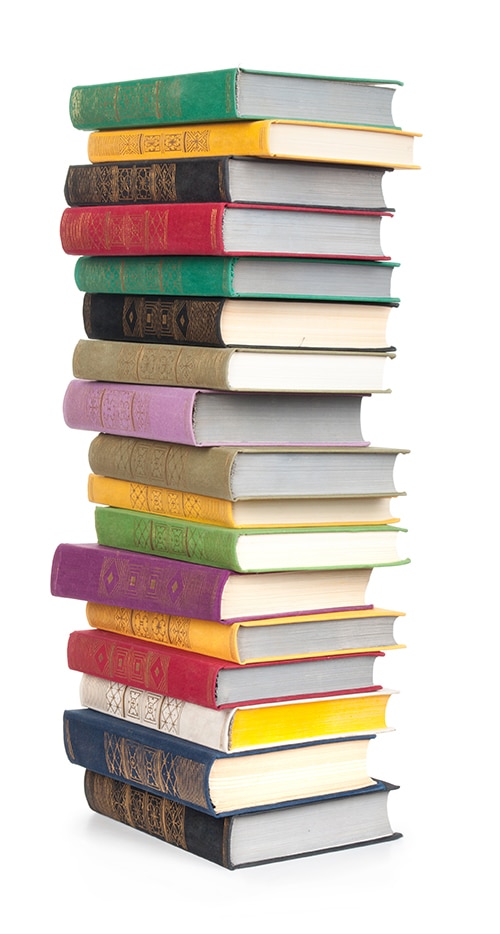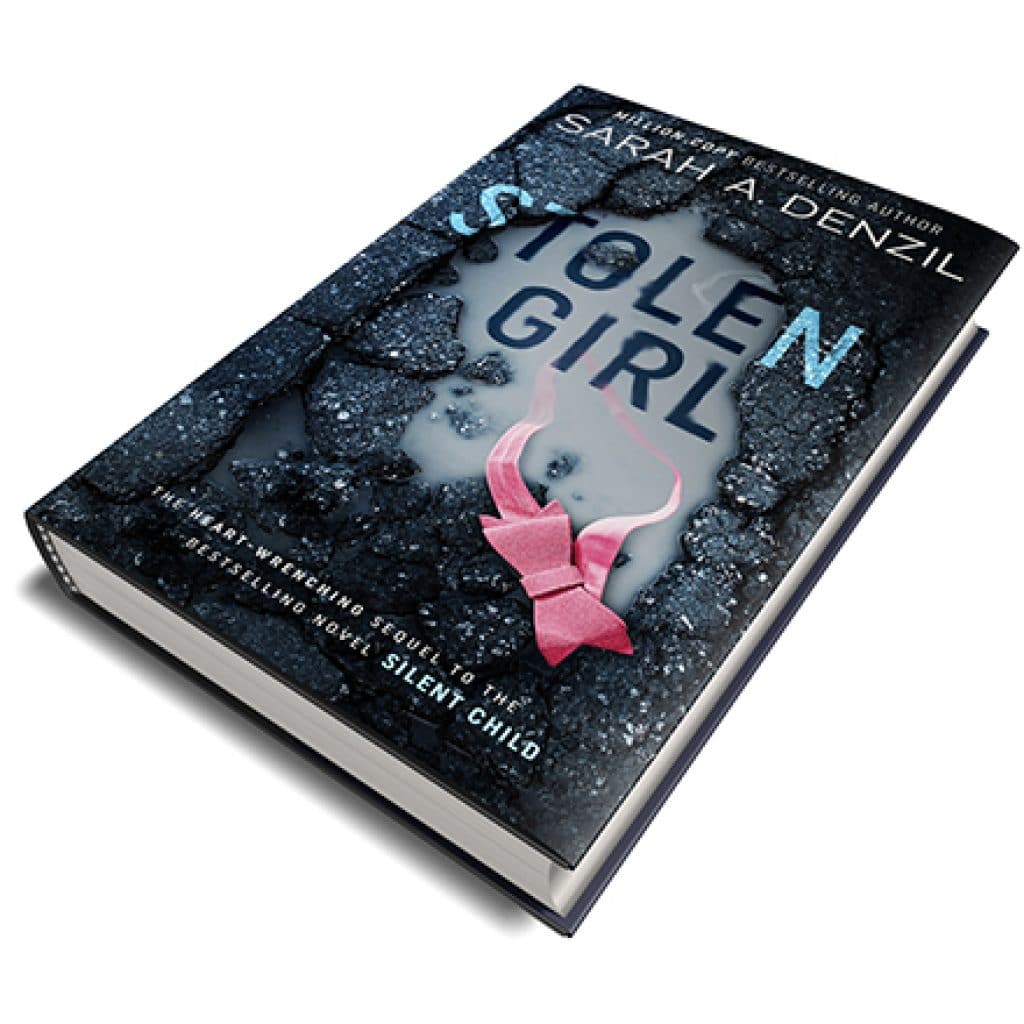Being a self-published author isn’t an easy task, but choosing to publish your book as a hardcover vs paperback doesn’t have to be daunting. You have several excellent cover material options to choose from, and after reading this article about hardcovers and paperbacks, you’ll be familiar with the pros and cons of each of them.
You might even decide that you want to release your book in several different formats because, yes! That’s an option too.
So let’s discuss each method of publication and discover which one is most effective in marketing your book to your target audience. Get ready to take a deep dive into paperback vs hardcover, sizes, durability, use, and more.
While reading, feel free to skip around the table of contents to go straight to the information you need or bookmark this page to come back to later.
Hardcovers

Hardcovers are the old-timers of the book world. Beautiful, heavy-duty hardcover books signal long-term value. They’re also more costly for a publishing house to produce and for readers to buy.
So what exactly is a hardcover?
Most hardcover books are made of thick cardboard or card-paper. This material is typically between 2.5mm and 3.5mm thick. Children’s books can be even thicker to help prevent damage. Think about the Dr. Seuss book you had as a kid compared to a New York Times Bestseller.
Hardcovers (or some people call them hardbacks, it’s all the same thing) are larger on average than paperbacks too. Mass-market or “trade” hardcovers are generally between 229x152mm (9×6 inches) and 279x216mm (11×8.5 inches). By comparison, mass-market paperbacks can be as small as 105x74mm (4.13×2.91 inches).
Casewraps vs. Dust Jackets


A casewrap hardcover doesn’t have a removable cover. Instead, the cover image is pasted right onto the front of the book. This is a popular type of hardcover design for textbooks, cookbooks, coffee table reads, general non-fiction, and children’s books.
Some hardcover books, like popular fiction, collectors’ editions, or memoirs, will have dust jackets. (A Dr. Seuss anthology, for example, might have a dust jacket.)
Dust jackets are removable covers with two inner flaps. The inner flaps can include biographical information about the author or provide a summary of the book. Dust jackets for books can be made of paper or a more robust material called wibalin. Underneath a dust jacket, the hardcover book is typically given a presentable but plain cover design. It might be a solid color or a repeated pattern with the book title and author’s name included.
All covers come in a variety of finishes. Casewrap covers or dust jackets are laminated with gloss, matte, or soft-touch. This “finishing touch” helps give the book extra protection against scratches and marks.
Metallic foil stamping or embossing (adding textured images or lettering) can also be used with casewraps or dust jackets to make a cover image shiny or stand out on a shelf.
Pros of a Hardcover
- Hardcovers are built like tanks (Really elegant tanks). This sleek durability is a significant selling point. The higher-quality materials are another one. Think about the binding, the finishing, and even the pages themselves. It’s common for libraries and schools to order hardcover copies because they want books that will last.
- There is a sense of prestige. We like to print highly-valued books in hardcover. The bible, classic epics, and those lovely journals at Barnes and Noble. In today’s competitive book market, literary spheres see hardcover as a mark of distinction. If you want your book to look like a million bucks propped up on your shelf, indulge yourself, and consider hardcover vs paperback.
- You receive higher returns ($$$). Hardcovers typically sell for between $20 and $30 USD, but the price only skyrockets from there. This collector’s edition of Game of Thrones costs hundreds of dollars! Higher sale prices equate to higher returns for you. Keep in mind; author take-home pay is only a small percentage of the sale price.
- Gain more credibility as an author. If you’re writing a book where author ethos is essential, hardcovers can convey credibility right away. This is especially true for autobiographies, memoirs, and true crime stories.
Cons of a Hardcover
- Hardbacks are more expensive for you ($$$). Printing hardcover books is a costly process for presses, and often, they pass those extra costs onto authors. If you’re unsure about how well your book will sell or you’re a first-time author, it might be time to take a hard look at your budget.
- There are fewer buyers. Book-buying statistics tell us that the majority of readers prefer paperbacks or ebooks. Think about books like journals. Have you ever received a journal from a friend that was so beautiful and so perfect that you were terrified to write in it and mess it up? Yup, been there before. You don’t want your readers to be afraid to enjoy your book!
- You have fewer presses to work with (slower production). Keep in mind that only a select number of presses work directly with self-publishing authors who want hardcovers. Finding this type of press can be time-consuming and could delay getting your book to readers. For example, at the time of this writing, KDP print does not offer a hardcover option to all authors.
- Hardcovers are one-time purchases. It’s unlikely that readers will wear out a hardback title and have to buy a replacement anytime soon. Because hardcovers demand such a high price, people expect longevity.
Paperbacks

If you’re a book lover who always carries a novel up your sleeve or in your purse, you understand the advantages of paperback vs hardcover copies.
These soft-shelled books (or softcovers) are meant to be carried on busses, borrowed by friends, and ultimately loved by their readers. All in all, Paperbacks are a great choice for authors who want to have those coveted paper copies of their book without the high hardcover prices.
What makes a book paperback?
Paperback might all look the same at first glance, but some slight differences in how they are crafted make a big difference for readers. The two main types of paperbacks are mass-market and trade. Both use the same kinds of paper (white, natural, recycled, or hybrid) depending on the press, but they vary in size and durability. Paperbacks typically sell for between $9 and $18 USD.
Mass-Market vs Trade Size
Mass-market paperbacks are precisely what their name implies; books that publishing houses can cheaply and effectively mass produce for readers. These are your short and stout epic fantasy or science-fiction novels. Famous authors like Tolkien, George R.R. Martin, and N.K. Jemisin got started here.
Exact dimensions for mass-market paperbacks hover around 105x74mm (4.13×2.91 inches), but they can be as large as 297x210mm (11.69×8.26 inches). These books will have the smallest fonts, and the highest page counts.
Book buyers sometimes complain that the font commonly used in these copies (called leading and pronounced “ledding”) combined with the minimal spacing, makes them hard to read.
Trade paperbacks benefit by being in the same size range as their hardcover counterparts, around 229x152mm (9×6 inches) to 279x216mm (11×8.5 inches), with children’s books averaging 254x203mm (10×8 inches). They also have larger fonts, better readability, and sometimes thicker pages than mass-market copies.
Trade paperbacks are a popular choice among readers because they are a good size, lightweight, and cheaper than hardcovers. Some presses call trade copies “standard issue” as they have become a go-to method of producing softcovers.
Pros of a Paperback
- Publishing a paperback is cheaper for you ($$$). If you are worried about the costs associated with publishing your book, you should investigate a paperback solution. Paperback copies cost significantly less to manufacture than their hardcover siblings.
- The ease of publishing! Publishing your manuscript is exhausting. You thought writing it was a quest of epic proportions?! Publishing and marketing might feel like a whole new adventure but it doesn’t have to be like slaying dragons. You can publish paperback copies on Amazon (though that has its own pros and cons). The point is, you have several different good options at your fingertips when you choose the paperback route.
- You have potentially more buyers. Everyone wants their book to be a huge success (you know you do!). Sometimes keeping your book under $20 is just enough encouragement to entice readers to buy. Using a paperback first release is becoming a more popular strategy among publishing houses to combat low ebook prices. Also, as books wear out, readers might be tempted to re-buy copies.
- More control and more customization. As discussed above, there is more to paperback books than first meets the eye. If you care about your book being published with a specific page count or by a hard deadline, paperback copies might give you the freedom you need.
Cons of a Paperback
- Paperbacks get damaged. Have you ever pulled a book out of your backpack or purse, only to discover you’ve bent or torn the cover? Yeah, that isn’t very pleasant. This isn’t to say that hardcover books are invincible, but paperbacks are definitely less durable.
- They don’t get the same respect. It’s sad, but it’s true. Books that go straight to a paperback release are often looked down upon by the greater publishing industry. This doesn’t mean that you can’t have an award-winning, kick-ass book in paperback, but you might have to defend it a little more.
- It’s more challenging to sell paperback copies to schools and libraries. This can be a deal-breaker for many children’s book authors. Large organizations that lend books to children, or even the general public, have a strong preference for hardcover books because they know that readers (especially young ones) will damage books in the long run.
In Summary: Hardcover vs Paperback
All things considered, hardcovers and paperbacks each come with their own sets of advantages and disadvantages. There are no strict rules about how you must publish your book, and in the end, it comes down to personal preference.
Team hardcover is built-to-last, beautifully crafted, and worth its weight in pages. However, it’s also pricey and significantly limits your press options. Is this your perfect fit? If so, fantastic! Decide if you want to go the dust jacket route or choose a classy casewrap.

Team paperback is always down for an adventure. These copies don’t have the same lifespan as hardcovers (but hey, replacement copies are good for your bottom line!). But they make up for it with their ease of publishing and cheaper upfront costs.

Now that you have a little more behind-the-scenes book building knowledge, you can start your search for printed publication! Make sure to find a press you feel comfortable with (you are giving them your book after all!) and are open to working with in the long run if you are writing a series.
How did you decide to publish your book when comparing hardcover vs paperback cover formats?

